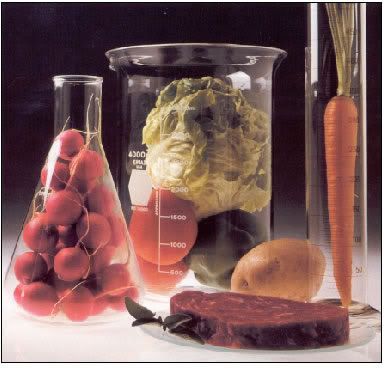Weight Loss and Diet Plans.
Several types of diet plans produce at least short-term weight loss; portion size may matter more than what we eat.
For one person, it’s when the belt buckle moves down a notch or two and a favorite pair of jeans, suddenly unzippable, is shoved into a drawer. For another, it’s the jolt of an unexpected diagnosis of prediabetes. For another, sleep apnea. For still another, it’s soaring blood pressure that’s resistant to antihypertensives. The stimuli that prompt weight loss are as varied as patients’ health histories (or wardrobes). How, then, can a person decide on the best approach?
Behind Door Number 1 is the sensible, time-honored path: a meal plan and an exercise regimen.
Behind Door Number 2 lurk the insidious tricksters: the diet pills, the laxatives and diuretics, the urge to starve and purge and try fad diets.
Behind Door Number 3 is the impulsive change: the sudden decision to make extreme revisions to diet or lifestyle without forethought or planning—and the almost inevitable sense of failure when motivation burns out.
For one person, it’s when the belt buckle moves down a notch or two and a favorite pair of jeans, suddenly unzippable, is shoved into a drawer. For another, it’s the jolt of an unexpected diagnosis of prediabetes. For another, sleep apnea. For still another, it’s soaring blood pressure that’s resistant to antihypertensives. The stimuli that prompt weight loss are as varied as patients’ health histories (or wardrobes). How, then, can a person decide on the best approach?
Behind Door Number 1 is the sensible, time-honored path: a meal plan and an exercise regimen.
Behind Door Number 2 lurk the insidious tricksters: the diet pills, the laxatives and diuretics, the urge to starve and purge and try fad diets.
Behind Door Number 3 is the impulsive change: the sudden decision to make extreme revisions to diet or lifestyle without forethought or planning—and the almost inevitable sense of failure when motivation burns out.
Even for those who eschew the false promises behind Door Number 2 and who think carefully before opening Door Number 3, browsing through the available weight-loss interventions to find the safest and most effective approaches can be daunting. Perhaps that’s why Americans spend more than $46 billion a year on weight-reduction programs, even as obesity rates rise. The cost to the nation is also staggering, as Medicare and Medicaid fund approximately half of the $75 billion attributed to obesity-related health problems.
But the news is not entirely discouraging. Even modest weight decreases have been shown to decrease plasma lipid levels and hypertension. There are also financial benefits; for example, losing 10% of one’s body weight can reduce lifetime medical costs by up to $5,300.
While the combination of diet and exercise has been shown to be the most effective method of weight loss (when one year of follow-up is used as the benchmark), the focus of this article is on diet plans alone for weight loss. Eating, unlike exercising, is not optional. But the choices that one makes—an apple, or an apple fritter—can make a difference.
AN OVERVIEW OF DIET PLANS
Three physiologic mechanisms are implicated in weight gain: increased energy intake (in kilocalories [kcal]), decreased energy expenditure, and increased energy storage. (To calculate body mass index, the most common measure of body fat in adults, go to http://nhlbisupport.com/bmi .) Weight loss occurs when caloric intake is lower than expenditure. To lose 1 lb. a week, one would have to restrict 500 kcal per day. Most weight-loss diet plans restrict caloric intake in one way or another.
Prepackaged diets
Metz and colleagues compared a prepackaged plan (approximately 22% of the calories come from fat, 58% from carbohydrates, and 20% from protein) with a nutritionally comparable “usual-care” diet. At one year, participants in the intervention group lost significantly more weight and showed more favorable improvements in blood pressure, plasma lipid levels, and quality-of-life scores. In addition, the authors concluded that “the prepared meal plan provided the simplicity and nutrient composition necessary to maintain long-term compliance.” In a search of Medline, no studies could be found of two of the most popular diet plans offering prepackaged meals, Jenny Craig and NutriSystem.
Meal replacements run the gamut from liquid formulas to prepackaged meals and snack bars. As defined by Heymsfield and colleagues, the majority are fortified with vitamins and minerals and are “designed to replace one or two regular meals or snacks daily.” This approach is thought to work by reducing overall caloric intake as a result of smaller portions and more healthful food choices. In general, each meal substitute provides approximately 200 to 300 kcal. The metaanalysis compared diets based on liquid meal replacements (such as Slim-Fast) to conventional low-calorie diets. All diet plans were to provide between 800 and 1,600 kcal a day. The authors found that, at one year, those participating in liquid meal replacement diets lost significantly more weight than the other group. (It warrants note, however, that the lead author is a member of the Slim-Fast Nutrition Institute.)
Low-fat diets restrict intake of fats to between 20% and 30% of the daily calories consumed. An essential nutrient, fats contain 9 kcal per gram (compared with 4 kcal per gram for both proteins and carbohydrates). Because consuming fat is thought to contribute to obesity, low-fat diets are popular. But according to The Practical Guide: Identification, Evaluation, and Treatment of Overweight and Obesity in Adults, “Fat matters, but calories count.” In other words, a low-fat diet that doesn’t include a reduction in overall caloric intake won’t promote weight loss; the body will store carbohydrates as fat. In fact, many “fat-free” products have more calories than the foods they are designed to replace.
Some low-fat diets and very-low-fat diets (in which fat constitutes as much as 15% of calories consumed) contain a higher proportion of complex carbohydrates. If people replace fat calories with fruits and vegetables that are high in fiber and low in calories, they will consume fewer calories and lose weight. A recent study compared the Ornish diet, a vegetarian diet in which 10% of the calories come from fat, with three other popular diets: a low-carbohydrate diet (Atkins diet), a moderate-carbohydrate diet (Zone diet), and one based on calorie restriction (Weight Watchers). While each group showed weight loss at one year, the Ornish diet had the highest discontinuation rate (50%) and the Atkins plan followed close behind, with a 48% dropout rate. The authors commented that this suggests “many individuals found these diets to be too extreme.”
An American Heart Association Science Advisory states that very-low-fat diets are not appropriate for young children, the elderly, pregnant women, or people with eating disorders and that people “with insulin-dependent diabetes mellitus, elevated [triglyceride] levels, and carbohydrate malabsorption illnesses should also avoid such a diet.”
Moderate-fat, low-calorie diets allow for up to 35% of calories from fats and limit carbohydrates and proteins. Also called Mediterranean-style diets, they incorporate essential omega-3 fatty acids, which carry well-established benefits. The issue of whether the intake of fats influences weight loss was studied in a randomized controlled trial: a Mediterranean-style diet (in which 35% of calories came from fat) and a low-fat diet (in which 20% of calories came from fat) were analyzed over a 30-month period. Results showed an average weight loss of 4.1 kg in those following the Mediterranean-style diet, with better long-term participation and adherence. In another study, the Lyon Diet Heart Study, adults following a Mediterranean-style diet of 1,947 kcal, 30.4% of which came from fat, were shown to have a 50% to 70% lower risk of recurrent heart disease.
Low-carbohydrate, high-protein diets usually allow for only 20 g to 90 g of carbohydrates per day; protein and fat are unrestricted. When carbohydrate intake is minimized, glycogen stores and fats are used as energy sources, altering the body’s metabolism and causing an initial loss of weight from ketosis and diuresis. By restricting carbohydrates, these diets eliminate many nutrient sources; supplemental vitamins, minerals, and fiber may be required. Furthermore, because these plans often increase the amounts of protein derived from animal sources, the foods eaten are generally higher in total fat, saturated fat, and cholesterol.
Although the first book representing the most famous of the low-carbohydrate, high-protein diets—Dr. Atkins’ Diet Revolution—was published in 1972, recent studies have tested, and sometimes challenged, the efficacy of these plans. Bravata and colleagues found that weight loss was associated with lower caloric intake and longer diet duration and not with reductions in carbohydrate intake. A one-year randomized controlled trial compared a low-carbohydrate, high-protein, high-fat diet with a low-calorie, high-carbohydrate, low-fat diet. The researchers found that although during the first six months the low-carbohydrate diet produced greater weight loss, “differences were not significant at one year.”
The low-carbohydrate diet was associated with improvements in coronary heart disease risk factors in the study subjects: increased high-density lipoprotein (HDL) cholesterol levels and decreased triglyceride levels. However, according to the study authors, “the clinical significance of [this] is not clear. [horizontal ellipsis] It is also possible that the large amount of saturated fats and small amounts of fruits, vegetables, and fiber consumed during the low-carbohydrate diet can independently increase the risk of coronary heart disease.” A study by Stern and colleagues produced comparable findings.
Adverse effects
Complications of low-carbohydrate, high-protein diets can include vitamin deficiencies, altered cognitive function (a complication of ketosis), increased low-density lipoprotein cholesterol levels, and increases in the glomerular filtration rate. Long-term effects can include nephrolithiasis (renal stones), osteoporosis, and progression of chronic renal insufficiency.
The WHI Dietary Modification Trial
The search for the silver lining in the low-fat diet studies.
The Women’s Health Initiative (WHI) trials are a series of National Institutes of Health studies designed to deepen our understanding of some of the leading causes of death and disability in postmenopausal women: osteoporosis, heart disease, and cancer. Many health care practitioners—and patients—are aware of the WHI because of the turmoil brought about by the results of the study arm examining hormone replacement therapy. Now the results of the WHI’s Dietary Modification Trial have been released, and they’re perplexing, to say the least.
The major conclusion drawn from the study (according to three papers published in the Journal of the American Medical Association [JAMA]) is that postmenopausal women who eat a low-fat diet do not significantly reduce their risks of breast cancer, colorectal cancer, or heart disease and stroke. But before you tell your patients it’s all right to rush off to the nearest doughnut shop, consider the trial’s history and design, as well as the results of the studies’ various subgroup analyses.
The trial
Nearly 49,000 women 50 to 79 years of age were enrolled in the study between 1993 and 1998. They were followed for an average of just over eight years. About two-fifths of them were instructed to reduce their intake of total dietary fat to 20% of calories consumed; women in the control group maintained their normal diets. When the study started, the women in both groups were getting about 35% of their calories from fat.
Adherence
Unfortunately, only about 14% of women in the low-fat group were able to stick to the stringent dietary goal. By the sixth year, the women in that group were getting an average of 29% of their calories from fat, compared with 37% in the comparison group.
Out of date nearly from the start
In the 1990s, when the study was designed, only total fat calories were restricted because smaller studies had indicated that doing so might prevent cancer. “Nutrition knowledge has progressed dramatically since the study began,” says Mara Vitolins, PhD, one of the authors of the JAMA papers.
Today’s dietary guidelines no longer focus on total fat but instead distinguish between “good” fats, such as the mono- and polyunsaturated types found in nuts, fish, and vegetable oils, and “bad” fats, such as saturated fat in meats and trans fat in baked goods and margarines. Moreover, the benefits to the heart and anticancer properties of antioxidants and other natural compounds in fruits and vegetables were largely unknown at the start of the WHI study. Although the women in the low-fat group were instructed to eat more fruits and vegetables, most ate just one serving more per day than their counterparts.
Glimmers of hope
Despite the unassailable conclusion that simply reducing total fat intake does little to ward off breast or colon cancer or heart disease, subgroup analyses revealed nonsignificant trends, as well as directions for further research on the links between diet and breast cancer, colorectal cancer, and heart disease.
Breast cancer
The subset of women who started out eating the highest level of fat and cut back the most had a 15% lower rate of breast cancer, and overall those on low-fat diets had a 9% lower rate of breast cancer (a figure not considered large enough to be statistically significant, but still of interest to some researchers). The data also hinted that women in the low-fat group were less likely to develop more aggressive breast tumors.
Colorectal cancer
The overall risk of invasive colorectal cancer was comparable in the two dietary groups, yet a small benefit—perhaps attributable to random factors—appeared in the low-fat group among women taking aspirin or combined estrogen–progestin hormone therapy: self-reported first occurrences of polyps and adenomas, considered precursors of colorectal cancer, were reduced by 9% in the low-fat group. Whole grains, which are inversely linked to colorectal cancer in some studies, could not be evaluated because women in the low-fat group ate a mere half serving more daily than those maintaining their regular diets.
Heart disease
Simply cutting total fat intake did not affect the risk of heart disease or stroke. The participants’ overall change in low-density lipoprotein (LDL) cholesterol was small. Nonetheless, women who ate the least amount of saturated fat or trans fat and ate more fruits and vegetables had the lowest LDL cholesterol levels and a lower incidence of heart disease. (The now widely accepted cardiovascular benefits of omega-3 fats in fish were not considered when the trial was designed.)
“Since the study began, we’ve learned a lot more about how the types of fat we consume make a difference,” says Vitolins. Today’s dietary guidelines call for keeping saturated fats to less than 10% of calories, with most fats coming from fish, nuts, and vegetable oils like olive and canola. They also limit levels of trans fat, which are now listed on food labels. Plant-based, high-fiber diets rich in vegetables, fruits, whole grains, and beans are recommended to prevent cancer and heart disease. In addition, Vitolins points out, the women in the WHI study began the low-fat diet in midlife or later. “Our diets start when we are born,” she says. “What you eat over a lifetime will make a difference.”–Carol Potera
PORTION SIZE: THE FINAL FRONTIER
In 2002 Young and Nestle found that the average portion of a single serving of cooked pasta was 480% greater than the recommended serving size. 19 Cookies were 700% larger. Comparing U.S. Food and Drug Administration and Department of Agriculture recommendations on portions with portions provided by fast-food chains and takeout and “family-type” restaurants, and with serving sizes recommended by manufacturers of foods sold in stores, the researchers found that both agencies’ guidelines were largely ignored. In addition, they found that “the sizes of current marketplace foods almost universally exceed the sizes of those offered in the past.” They concluded, “Educational and other public health efforts to address obesity should focus on the need for people to consume smaller portions.”
Have people lost the ability to gauge appropriate portion sizes? Perhaps, given the confusion surrounding diet plans, many people simply believe that size no longer matters. “Most Americans believe the kind of food they eat is more important for managing weight than the amount of food they eat” began a press release summarizing a survey by the American Institute for Cancer Research. Indeed, the abundance of calorie-dense foods served at low cost in “super-size” portions promotes overconsumption. Until the relationship between portion sizes and weight management is widely understood, the fattening of America is bound to continue.
Break It Down
Weight loss can be habit forming.
“A lot happens between making a resolution and making a behavior change,” explains Lynette Menefee, PhD, coauthor (with Daniel Somberg, PhD) of The Ten Hidden Barriers to Weight Loss and Exercise: Discover Why You’ve Failed Before and How to Succeed Now. For most people wishing to make lasting changes, the line from decision to success isn’t straight. The authors use a “readiness-to-change” model, also known as the transtheoretical model, that posits six stages of change.
According to Menefee, health care professionals can provide crucial assistance by helping patients “move from their current stage to the next one.” Here are the stages as they relate to weight loss.
Precontemplation
If the patient isn’t intending to take action to lose weight, he is in the precontemplation stage. During this stage, interventions are limited. Providing the patient with information may help spark interest.
Contemplation
The patient is thinking about taking action to lose weight within the next six months. Ask the patient to write down the pros and cons of losing weight. This can help him to identify personal barriers, which is the first step toward overcoming them. Menefee describes, for example, one patient who “feared the attention” that losing weight would bring and another who said, “I wouldn’t know who I was.” Menefee also suggests asking the patient to project himself into the future and imagine what his life would be like if he achieves his weight-loss goal (and if he doesn’t).
Preparation
The patient plans to take action to lose weight within the next month to six months. During this stage it’s important to establish clearly stated, sustainable, and measurable goals. Here is an example of a good goal: “I will walk for half an hour after dinner every Monday, Wednesday, and Friday.” Compare this to a weak goal: “I will exercise more.”
Another sign of a well-formed goal is that it fits in with the patient’s “overall life goals.” Menefee describes a hypothetical patient who claims to “hate mornings” but says she will wake up at 5 AM every morning to exercise. It’s likely that such a vow is a prescription for failure.
Action
The patient took action within the last six months but has not resolved his difficulties with weight loss. “Reinforcement from health care professionals is especially important during this phase,” says Menefee. Nurses can help patients prepare for situations in which they are likely to be tempted to abandon their good practices. They can also reassure patients who have gone off track and encourage them to begin again.
Maintenance
The patient is able to say that he solved his difficulties with weight loss or exercise at least six months ago. New habits become integrated through repetition, constant awareness, and accountability; it’s important to remember that during this stage, the key is practice, practice, practice.
Termination
This is the time that patients (and let’s face it, all of us) dream of—“behavior change” has become a “behavior,” no longer requiring an inner battle to take that morning run or say no to second helpings.–Lisa Santandrea
Menefee LA, Somberg DR. The ten hidden barriers to weight loss and exercise: discover why you’ve failed before and how to succeed now. Oakland, CA: New Harbinger; 2003.
NURSING IMPLICATIONS
To help a patient select a diet plan, the nurse and patient should first determine the patient’s weight-loss goal. Are dietary changes recommended by the patient’s primary care provider? For patients with a large amount of weight to lose, and those on very-low-calorie diets, medical supervision is recommended. Many other diets and structured meal plans are designed to achieve less dramatic results, with weight loss of 1 to 2 lbs. per week.
To choose a program that will work best for the patient, several factors need to be assessed. What are the patient’s usual eating habits? If the patient enjoys bread, fruits, and vegetables, the low-carbohydrate diet may lose its appeal in a short time. If the patient dislikes shakes, meal-replacement plans may not be desirable. Other factors include cost and the time commitment required by group programs such as Weight Watchers or Diet Center. Being informed about healthy diet options is an important step toward lifelong weight management.




0 Comments:
Post a Comment
<< Home